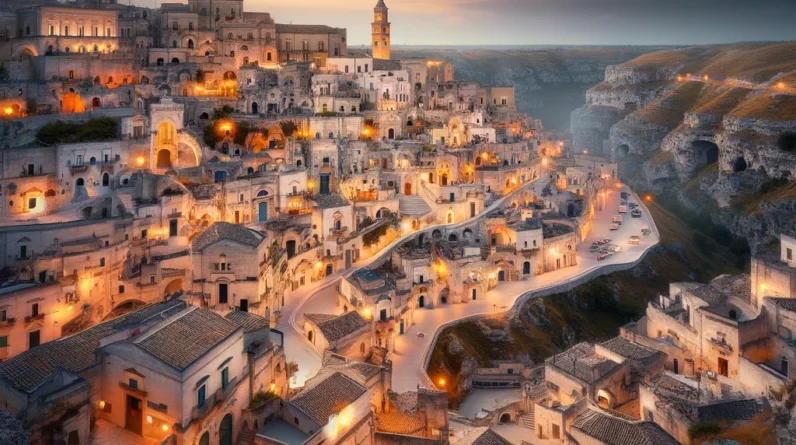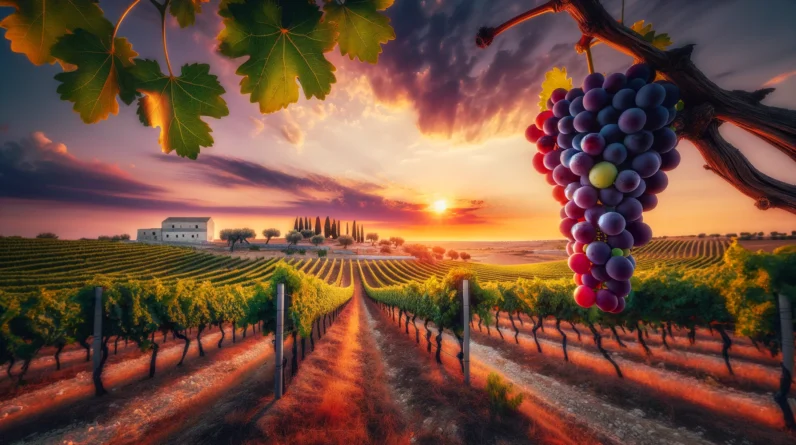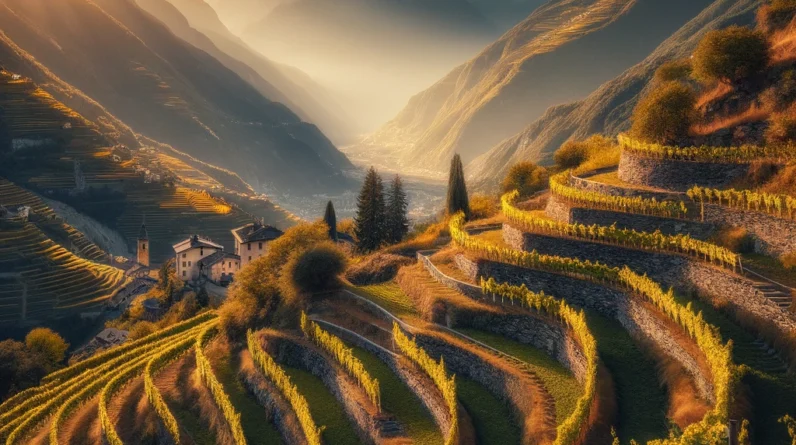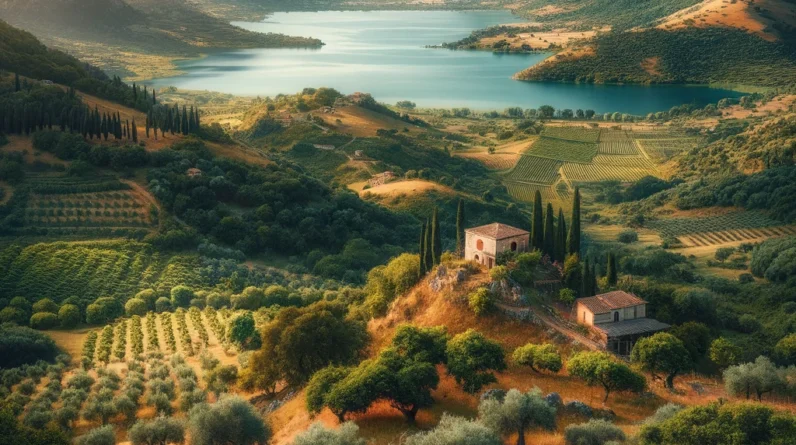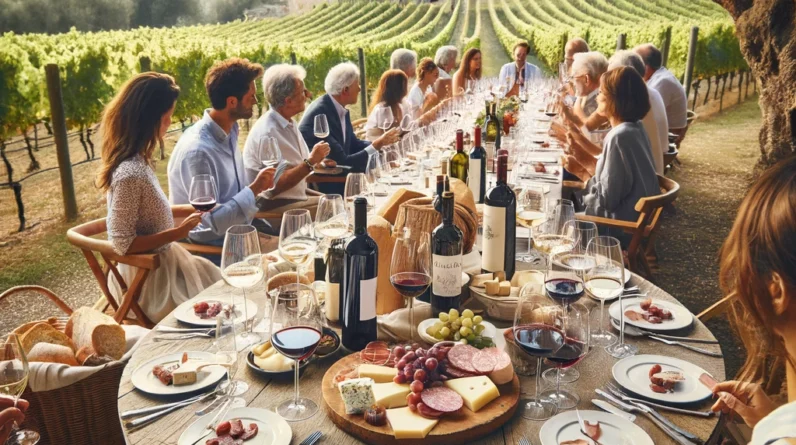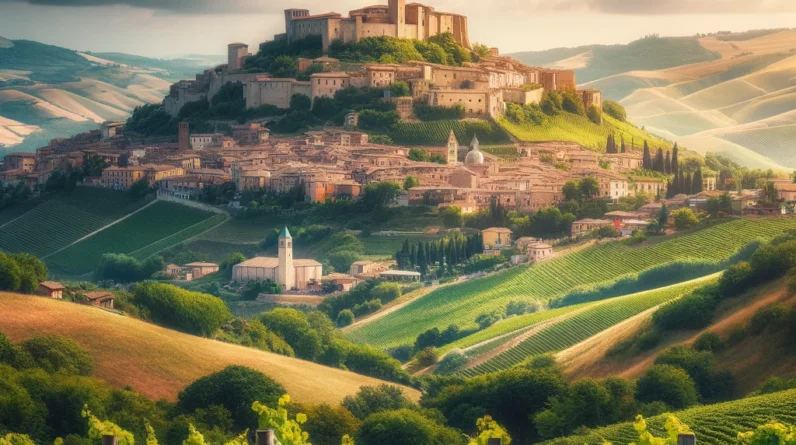
Exploring the Wine Treasures of Cérons: A Vivid Journey Through Flavors and Vines
Nestled in the prestigious Bordeaux region of France, Cérons, though lesser-known than its famed neighbor Saint-Estèphe, presents a tapestry of winemaking excellence and rich viticultural
history.
This exploration into Cérons’ wines and vineyards uncovers its unique offerings, echoing the enchantment of French winemaking.
Diverse Array of Wines: A Symphony of Flavors
Cérons, primarily recognized for its sweet white wines, especially those under the Cérons AOC, exudes a diverse range of flavors and styles.
These wines, typically made from Sémillon, Sauvignon Blanc, and Muscadelle grapes, offer a palette of taste experiences.
From the honeyed, luscious sweetness of its dessert wines to the crisp, refreshing notes of its dry whites, Cérons’ wines are a celebration of complexity and elegance.
Here’s a table that summarizes the grape varieties found in Cérons, their flavor profiles, tasting notes, and the types of wine they are commonly used in:
| Grape Variety | Flavor Profile | Tasting Notes | Wine Type |
|---|---|---|---|
| Sémillon
| Rich, honeyed, with notes of stone fruit | Apricot, peach, lemon, and toast | Sweet White |
| Sauvignon Blanc
| Fresh, zesty, with grassy and citrus tones | Lime, green apple, passion fruit, and freshly cut grass | Dry White |
| Muscadelle
| Floral, with hints of grape and light fruitiness | Pear, jasmine, and orange blossom | Sweet White |
| Merlot
| Fruity, with red berries and a smooth texture | Cherry, blackberry, plum, and cedar | Red |
| Cabernet Sauvignon
| Full-bodied, with dark fruit flavors and firm tannins | Black currant, tobacco, dark chocolate, and green pepper | Red |
Climatic Influence: The Weather’s Whisper in the Wines
The climate of Cérons plays a pivotal role in shaping the character of its wines.
This region enjoys a temperate climate with significant Atlantic influences.
The warm summers and mild winters are ideal for the slow, steady ripening of grapes.
The autumnal mist, arising from the nearby Garonne river, is crucial for the development of ‘noble rot’ (Botrytis cinerea), especially beneficial for the sweet white wines, adding complexity and
depth.
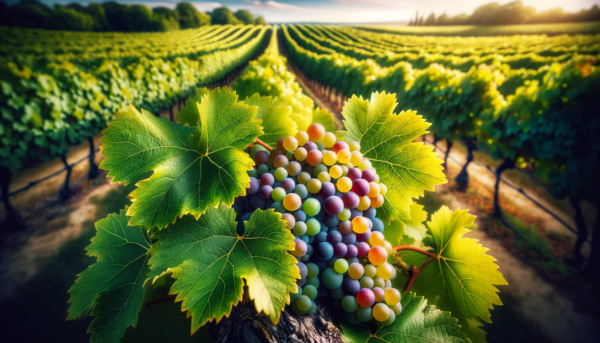
Landscape and Terrain: Nature’s Blueprint for Flavor
The geographical setting of Cérons, with its gentle hills and lush greenery, not only adds to the scenic beauty but also contributes to the vineyard’s health.
The natural slopes ensure good drainage, while the proximity to the river moderates temperatures, reducing the risk of frost and encouraging the development of the distinctive flavors in the
grapes.
Soil Composition: The Foundation of Terroir
Cérons’ soil is a rich mosaic, predominantly composed of gravel, sand, and limestone.
This diverse soil structure plays a critical role in vine growth.
Gravelly soils provide excellent drainage, stressing the vines just enough to produce grapes of higher quality.
The sandy and limestone components retain enough moisture to keep the vines hydrated, contributing to the balanced acidity and minerality of the wines.
Winemaking Techniques: A Blend of Tradition and Innovation
The winemaking in Cérons is a harmonious blend of age-old traditions and modern innovations.
For sweet wines, the process of allowing Botrytis cinerea to affect the grapes is a delicate art, requiring meticulous timing and handling.
Fermentation is often carried out in oak barrels, adding complexity and structure to the wines.
For dry whites, modern techniques ensure the preservation of the grape’s natural flavors and aromas, resulting in fresh, vibrant wines.
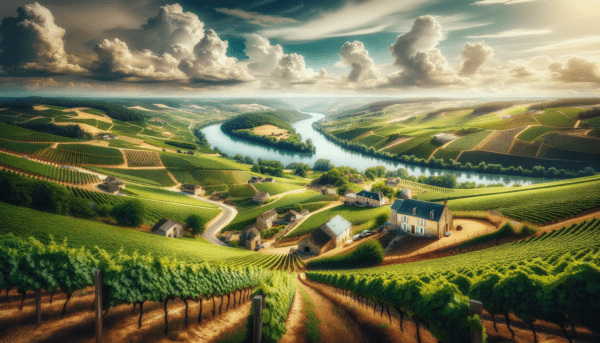
Special Features of Cérons Wines: A Distinctive Sip of Excellence
Cérons wines are distinguished by their remarkable balance of sweetness and acidity, particularly in the sweet whites.
This equilibrium makes them versatile for pairing with a variety of cuisines.
The dry whites are noted for their crispness and aromatic intensity, often featuring floral and citrus notes.
The red wines, though less common, exhibit robust flavors and are known for their aging potential.
Vineyard Jewels: The Heart of Cérons’ Wine Excellence
The vineyards of Cérons are the lifeblood of its wine legacy.
Each vineyard, with its unique terroir and meticulous wine-making techniques, crafts a story in a bottle.
Historical estates intertwine with modern viticulture, showcasing practices that elevate wine quality.
The smaller scale of Cérons’ vineyards allows for a focus on quality and artisanal craftsmanship, setting these wines apart in the world of viticulture.
Here’s a table outlining some of the most notable vineyards in Cérons, along with their standout wines and what they are particularly renowned for:
| Vineyard | Notable Wines | Famous For |
|---|---|---|
| Château de Cérons
| Cérons, Graves Rouge, Graves Blanc | Historic estate with a 17th-century château, known for elegant and balanced sweet wines |
| Château Calvimont
| Graves Blanc, Graves Rouge | Family-owned vineyard renowned for its traditional methods and exceptional Graves wines |
| Château Crabitan Bellevue
| Cérons Sweet, Bordeaux Rouge | High-quality sweet wines with a focus on sustainable viticulture |
| Château du Mayne
| Cérons, Bordeaux Blanc Sec | Small production with a strong focus on terroir expression and artisanal winemaking |
Each of these vineyards contributes to the rich tapestry of Cérons’ winemaking tradition, offering a unique blend of history, craftsmanship, and dedication to quality.
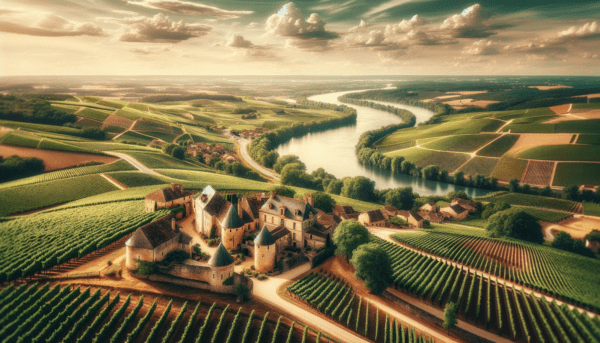
Wine Tasting Adventures: Immerse in the Essence of Cérons
Cérons extends an open invitation to oenophiles and novices alike for wine tastings and vineyard tours.
These experiences are not just about sipping wine; they are immersive journeys through the vineyards, understanding the wine-making process, and meeting the passionate vintners who bring
these wines to life.
Visiting Cérons, nestled in the Bordeaux wine region of France, is not only a journey through exquisite winemaking but also an exploration of historical and cultural richness.
Here are some special places to visit and practical tips for your journey.
Special Places to Visit in Cérons
Château de Cérons
This historic château, dating back to the 17th century, is not only a winery but also a piece of architectural beauty.
It’s a great place to understand the wine-making process and taste the region’s signature wines.
Village of Cérons
The village itself, with its charming streets and traditional French architecture, offers a glimpse into the local lifestyle. It’s a great place to stroll, relax, and enjoy the peaceful ambiance.
Local Vineyards and Wineries
Exploring various vineyards is a must.
Each offers unique tasting experiences, tours, and insights into the wine-making process.
Some notable ones include Château Calvimont and Château du Mayne.
The Garonne River
Enjoy a scenic walk or a picnic along the banks of the Garonne River.
It’s an integral part of the region’s ecosystem and a beautiful spot for relaxation.
Nearby Historical Towns
Explore nearby towns like Cadillac and Sauternes, each with their own historical and wine-related attractions.
Bordeaux City
A short drive away, Bordeaux is a city rich in history, culture, and gastronomy.
It’s well worth a day trip to explore its museums, shops, and restaurants.
Practical Tips for Visiting Cérons
Best Time to Visit
Late spring to early autumn is ideal for wine touring, as the weather is pleasant.
Harvest season (September to October) is especially fascinating.
Transportation
Renting a car is the most convenient way to explore Cérons and surrounding vineyards.
Public transport options are limited in rural areas.
Accommodations
Consider staying in local bed and breakfasts or vineyard guesthouses for an authentic experience.
Book in advance, especially during peak season.
Winery Visits
Many wineries require appointments for tours and tastings, so it’s wise to book these in advance.
Language
While some locals and winery staff may speak English, learning a few basic French phrases can enhance your experience.
Local Cuisine
Don’t miss out on trying local delicacies in small village restaurants or bistros.
Respect the Region
Remember to respect the vineyards, local customs, and the environment during your visit.
By immersing yourself in the scenic beauty, historical richness, and viticultural excellence of Cérons, you’ll experience a delightful and enriching journey through one of France’s lesser-known but
incredibly charming wine regions.
Where to Acquire: A Guide to Cérons’ Wine Gems
Whether for personal enjoyment or as a unique addition to a collector’s cellar, Cérons’ wines are treasures waiting to be discovered.
Local wine shops, online retailers, and directly from vineyards – there are multiple avenues to procure these liquid artworks.
Their exclusivity and distinctive character make them a wise choice for both enjoyment and investment.
Here’s a table highlighting some of the best vintages of Cérons and the reasons behind their excellence:
| Vintage Year | Reason for Excellence |
|---|---|
| 2009
| Exceptional weather conditions, leading to perfectly ripe grapes and balanced wines |
| 2010
| A year noted for its robust tannins and excellent aging potential |
| 2015
| Ideal harvest conditions, producing wines with excellent structure and complexity |
| 2016
| Marked by a hot summer and timely rains, resulting in wines with depth and finesse |
| 2018
| A warm year with well-timed rain, producing ripe and expressive wines |
These vintages stand out due to a combination of favorable climatic conditions and skilled vineyard management, resulting in wines that are not only superb in their respective years but also
show great potential for aging.
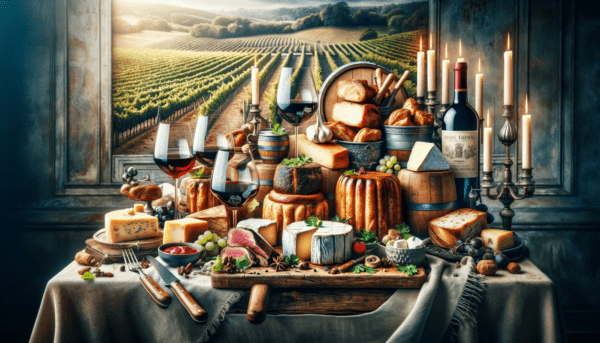
Gastronomic Delights: Perfect Pairings
Cérons’ wines, with their varied flavor profiles, are a delight in the culinary world.
The sweet wines beautifully complement desserts and foie gras, while the dry whites are perfect partners for seafood and cheeses.
Understanding these pairings elevates dining experiences, marrying the culinary arts with the art of winemaking.
Cérons, a region in the Bordeaux area of France, is not only celebrated for its exquisite wines but also boasts a rich culinary heritage.
The local cuisine in Cérons, much like in the broader Bordeaux region, features a variety of special foods that pair wonderfully with the region’s wines.
Here’s an overview of some of the standout culinary delights.
Canéles de Bordeaux
These small, caramelized pastries are a Bordeaux specialty.
Made with rum and vanilla, their soft custard center and dark, thick caramelized crust make them a delightful treat, especially when paired with the sweet wines of Cérons.
Foie Gras
This luxurious, rich liver pâté is a staple in French gastronomy.
In Cérons, it’s often served as an appetizer, sometimes with a sweet wine reduction or alongside fresh bread, and pairs exceptionally well with the sweet white wines of the region.
Entrecôte à la Bordelaise
A classic Bordeaux dish, this is a grilled rib steak cooked with a rich sauce made from red wine, shallots, herbs, and bone marrow.
It’s a perfect match for the robust red wines from the surrounding areas.
Lamproie à la Bordelaise
This is a traditional Bordeaux dish made with lamprey, a type of jawless fish, cooked in a sauce of its own blood, red wine, and seasonings.
It’s a unique dish that complements the more full-bodied red wines.
Oysters from Arcachon Bay
The nearby Arcachon Bay is famous for its oysters.
These fresh, succulent oysters are a perfect pairing with the crisp, dry white wines produced in Cérons.
Bordeaux Cheese Board
The region is also known for its cheeses, such as Brie de Meaux, Roquefort, and Camembert.
A cheese board featuring these varieties, along with fresh fruit and nuts, is a wonderful way to enjoy the diverse wine offerings of Cérons.
Pauillac Lamb
A regional specialty, this tender, flavorful lamb is often roasted or grilled and served with seasonal vegetables.
Its rich flavors marry well with the area’s red wines.
Duck Confit and Magret de Canard
Duck dishes are very popular in the region.
Duck confit (slow-cooked in its own fat) and magret de canard (duck breast) are rich, flavorful dishes that beautifully complement both the sweet and dry wines of Cérons.
These culinary specialties not only highlight the gastronomic diversity of the Cérons region but also offer perfect pairing opportunities with its varied wine portfolio.
The combination of local food and wine creates a complete and authentic experience of the region’s rich cultural and culinary heritage.
In conclusion, Cérons, with its array of exquisite wines, historic vineyards, and deep-rooted wine culture, stands as a testament to the diversity and richness of French winemaking.
This hidden gem in Bordeaux is a must-explore for any wine enthusiast seeking to broaden their wine horizons beyond the renowned appellations.
The confluence of Cérons’ favorable climate, diverse landscape, rich soils, and expert winemaking culminates in wines that are not just beverages but stories in a glass.
Each bottle is a testament to the region’s dedication to producing wines that not only reflect the terroir but also push the boundaries of winemaking.
Cérons, thus, stands as a beacon of excellence in the vast and varied world of French wines.
FAQs:
Q1: What types of wines are produced in Cérons?
A1: Cérons is renowned for its sweet white wines, primarily under the Cérons AOC.
These wines are made from Sémillon, Sauvignon Blanc, and Muscadelle grapes.
The region also produces excellent dry white wines and some red wines, known for their quality and distinct flavor profiles.
Q2: What makes Cérons wines unique?
A2: The uniqueness of Cérons wines lies in their balanced sweetness and acidity, especially in the sweet whites.
The region’s specific microclimate and soil composition contribute to the unique taste and quality of the wines.
The meticulous winemaking processes and the influence of ‘noble rot’ add complexity and depth to the wines.
Q3: Can I visit vineyards in Cérons?
A3: Yes, many vineyards in Cérons welcome visitors for tours and wine tastings.
These visits often include a walk through the vineyards, insights into the winemaking process, and tastings of different wines.
It’s advisable to book in advance, especially during peak tourist seasons.
Q4: Are there any notable vineyards in Cérons?
A4: Cérons is home to several notable vineyards, such as Château de Cérons, Château Calvimont, and Château du Mayne.
Each offers a unique experience and showcases different aspects of winemaking in the region.
Q5: What food pairings work well with Cérons wines?
A5: Cérons sweet white wines pair wonderfully with desserts, foie gras, and blue cheeses.
The dry whites are excellent with seafood, light pastas, and salads.
The red wines from the surrounding areas go well with red meats, game, and strong cheeses.
Q6: What are the best vintages from Cérons?
A6: Some of the best vintages include years like 2009, 2010, 2015, and 2016.
These years are known for their excellent weather conditions, which resulted in high-quality grapes and exceptional wines.
Q7: How does the climate in Cérons affect its wines?
A7: The temperate climate, with warm summers and mild winters, is ideal for grape cultivation.
The autumn mist contributes to the development of Botrytis cinerea, essential for the region’s sweet wines.
This climate results in a slow and even ripening of grapes, which is crucial for developing the flavors and quality of Cérons wines.
Q8: What are some activities to do in the Cérons wine region?
A8: Visitors can enjoy vineyard tours, wine tastings, exploring the charming village of Cérons, and visiting historical sites.
The region’s picturesque landscape also offers opportunities for scenic walks and picnics.


